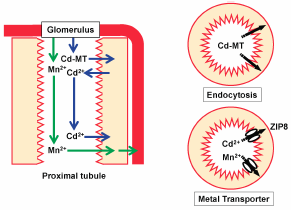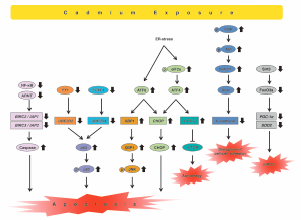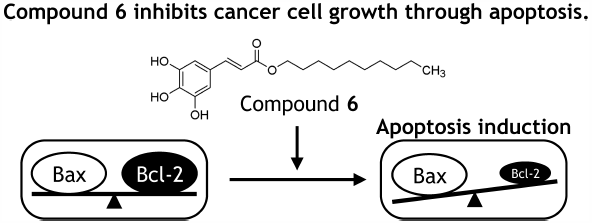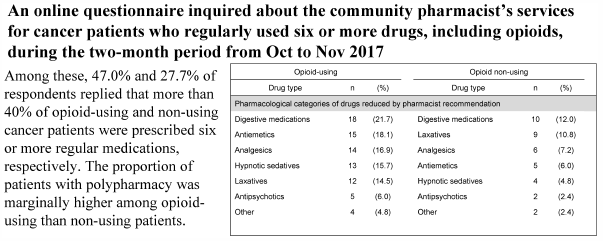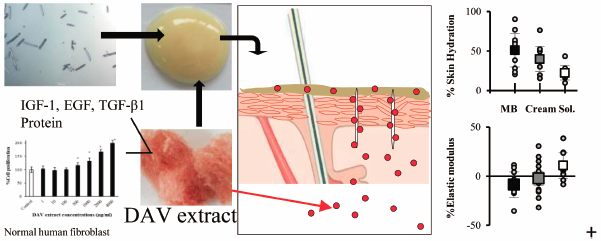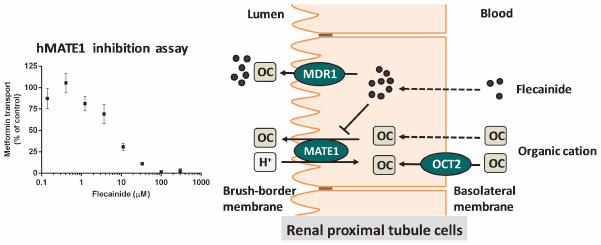Volume 42, Issue 7
Displaying 1-27 of 27 articles from this issue
- |<
- <
- 1
- >
- >|
Reviews
-
2019 Volume 42 Issue 7 Pages 1059-1063
Published: July 01, 2019
Released on J-STAGE: July 01, 2019
Download PDF (1138K) Full view HTML -
2019 Volume 42 Issue 7 Pages 1064-1068
Published: July 01, 2019
Released on J-STAGE: July 01, 2019
Download PDF (584K) Full view HTML
Current Topics - The Target Factor of Heavy Metal Toxicity and Its Molecular Mechanism
-
2019 Volume 42 Issue 7 Pages 1069
Published: July 01, 2019
Released on J-STAGE: July 01, 2019
Download PDF (145K) Full view HTML
Current Topics: Reviews
-
2019 Volume 42 Issue 7 Pages 1070-1075
Published: July 01, 2019
Released on J-STAGE: July 01, 2019
Download PDF (607K) Full view HTML -
2019 Volume 42 Issue 7 Pages 1076-1082
Published: July 01, 2019
Released on J-STAGE: July 01, 2019
Download PDF (421K) Full view HTML -
2019 Volume 42 Issue 7 Pages 1083-1088
Published: July 01, 2019
Released on J-STAGE: July 01, 2019
Download PDF (536K) Full view HTML
Current Topics: Regular Article
-
2019 Volume 42 Issue 7 Pages 1089-1097
Published: July 01, 2019
Released on J-STAGE: July 01, 2019
Download PDF (3146K) Full view HTML
Communication to the Editor
-
2019 Volume 42 Issue 7 Pages 1098-1101
Published: July 01, 2019
Released on J-STAGE: July 01, 2019
Download PDF (262K) Full view HTML
Regular Articles
-
2019 Volume 42 Issue 7 Pages 1102-1111
Published: July 01, 2019
Released on J-STAGE: July 01, 2019
Advance online publication: March 14, 2019Download PDF (4175K) Full view HTML -
2019 Volume 42 Issue 7 Pages 1112-1119
Published: July 01, 2019
Released on J-STAGE: July 01, 2019
Download PDF (2329K) Full view HTML -
2019 Volume 42 Issue 7 Pages 1120-1127
Published: July 01, 2019
Released on J-STAGE: July 01, 2019
Download PDF (5029K) Full view HTML -
2019 Volume 42 Issue 7 Pages 1128-1133
Published: July 01, 2019
Released on J-STAGE: July 01, 2019
Download PDF (1276K) Full view HTML -
2019 Volume 42 Issue 7 Pages 1134-1139
Published: July 01, 2019
Released on J-STAGE: July 01, 2019
Advance online publication: April 12, 2019Download PDF (632K) Full view HTML -
 2019 Volume 42 Issue 7 Pages 1140-1145
2019 Volume 42 Issue 7 Pages 1140-1145
Published: July 01, 2019
Released on J-STAGE: July 01, 2019
Editor's pickMyalgic encephalomyelitis/chronic fatigue syndrome (ME/CFS) has few beneficial treatments for patients. Recently, the involvement of pyruvate dehydrogenase (PDH) in ME/CFS has been reported. However, it is little known whether PDH could be a therapeutic target of ME/CFS. In this paper, Ohba et al. established ME/CFS model in mice and investigated the involvement of PDH. In an ME/CFS group, PDH activity was decreased in the mitochondrial fraction of the gastrocnemius muscle. Sodium dichloroacetate (DCA), which is a PDH activator, recovered fatigue-like behavior in ME/CFS group. These findings indicate that PDH might be an important therapeutic target for treatment of ME/CFS.
Download PDF (568K) Full view HTML -
2019 Volume 42 Issue 7 Pages 1146-1154
Published: July 01, 2019
Released on J-STAGE: July 01, 2019
Download PDF (8958K) Full view HTML -
2019 Volume 42 Issue 7 Pages 1155-1163
Published: July 01, 2019
Released on J-STAGE: July 01, 2019
Download PDF (973K) Full view HTML -
2019 Volume 42 Issue 7 Pages 1164-1171
Published: July 01, 2019
Released on J-STAGE: July 01, 2019
Advance online publication: April 17, 2019Download PDF (283K) Full view HTML -
2019 Volume 42 Issue 7 Pages 1172-1178
Published: July 01, 2019
Released on J-STAGE: July 01, 2019
Advance online publication: April 23, 2019Download PDF (3005K) Full view HTML -
2019 Volume 42 Issue 7 Pages 1179-1184
Published: July 01, 2019
Released on J-STAGE: July 01, 2019
Advance online publication: April 12, 2019Download PDF (862K) Full view HTML -
2019 Volume 42 Issue 7 Pages 1185-1191
Published: July 01, 2019
Released on J-STAGE: July 01, 2019
Download PDF (993K) Full view HTML -
2019 Volume 42 Issue 7 Pages 1192-1198
Published: July 01, 2019
Released on J-STAGE: July 01, 2019
Download PDF (370K) Full view HTML -
2019 Volume 42 Issue 7 Pages 1199-1206
Published: July 01, 2019
Released on J-STAGE: July 01, 2019
Download PDF (876K) Full view HTML -
2019 Volume 42 Issue 7 Pages 1207-1215
Published: July 01, 2019
Released on J-STAGE: July 01, 2019
Download PDF (4805K) Full view HTML -
2019 Volume 42 Issue 7 Pages 1216-1225
Published: July 01, 2019
Released on J-STAGE: July 01, 2019
Download PDF (5984K) Full view HTML
Notes
-
2019 Volume 42 Issue 7 Pages 1226-1229
Published: July 01, 2019
Released on J-STAGE: July 01, 2019
Download PDF (444K) Full view HTML -
2019 Volume 42 Issue 7 Pages 1230-1235
Published: July 01, 2019
Released on J-STAGE: July 01, 2019
Download PDF (2846K) Full view HTML -
2019 Volume 42 Issue 7 Pages 1236-1242
Published: July 01, 2019
Released on J-STAGE: July 01, 2019
Download PDF (578K) Full view HTML
- |<
- <
- 1
- >
- >|




